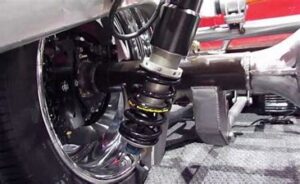A key factor in effortless and smooth steering is your car’s power steering system. The power steering pressure switch is one of the parts in charge of ensuring that it operates correctly. This little but crucial component aids in controlling the pressure in your power steering system, ensuring that it functions as it should. The power steering pressure switch, though, is not impervious to problems like any other part of your car. A leak in the switch is one frequent issue that can arise.
In this article, we’ll examine the definition of a power steering pressure switch leaking in a car, look into its numerous root causes, and offer workable remedies to the problem. By being aware of these factors, you may prevent future steering issues as well as maintain the power steering system in peak condition in your vehicle.
Table of Contents
Understanding Power Steering Pressure Switch Leaking In A Car
When a power steering fluid leaks from a power steering pressure switch, it significantly reduces the amount of fluid in the power steering system. This fluid leakage may manifest as drips or a gradual seepage of liquid. If ignored, it can result in a number of issues in either situation.
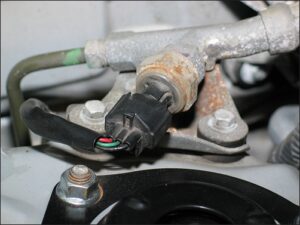
The purpose of the power steering pressure switch is to continuously check the pressure in the system and send instructions to the vehicle’s computer to modify the power steering aid as necessary. In addition to losing power steering fluid when it leaks, it also makes it difficult to measure pressure accurately. As a result, your power steering system might not perform at its best, making steering more challenging and perhaps resulting in long-term system damage.
Common Causes Of The Power Steering Pressure Switch Leaks
Let’s now examine the most frequent reasons for power steering pressure switch leaks and how to spot them.
1. Worn-Out Seals:
Due to exposure to heat, pressure, and power steering fluid, the seals inside the power steering pressure switch may deteriorate over time. These seals are susceptible to failure, which might cause fluid to leak out.
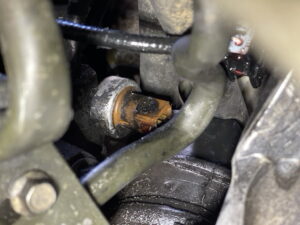
2. Corrosion:
The pressure switch for the power steering is frequently placed in an area where it is exposed to a variety of environmental elements, such as moisture and salt from the roads. The casing of the switch may corrode over time from exposure to these factors, developing weak places where leaks may happen.
3. Physical Damage:
Accidental collisions or impacts may harm the power steering pressure switch or the objects around. A leak can be produced by even a small impact. On the switch’s casing, a visual check may uncover cracks or dents.
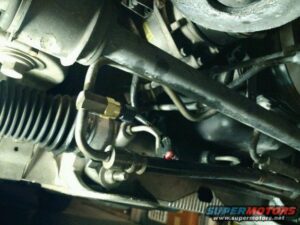
4. Manufacturing Flaws:
Power steering pressure switches occasionally may have manufacturing flaws that leave them vulnerable to leaking. Even though it may be an uncommon occurrence, it’s something to think about if your car starts to leak soon after installation.
5. Incorrect Installation:
The power steering pressure switch may not seal properly if it is not placed properly, which could result in leaks. The switch must be placed in accordance with the manufacturer’s instructions, and all connections must be secure.
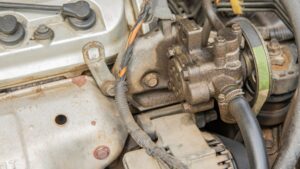
6. Strong Pressure:
It is possible for the pressure switch to leak in certain circumstances due to excessive pressure within the power steering system, which is frequently caused by a broken power steering pump or a blockage.
Therefore, these are some common causes of power steering fluid leaks. Which comes from a power steering pressure switch in your car. Don’t panic! we’ll see some straightforward solutions to these causes to get resolved easily.
Is It Safe To Drive A Car With The Power Steering Pressure Switch Leaks?
Driving a car with a leaky power steering pressure switch is dangerous over time. Leaking switches can result in a loss of power steering fluid, which makes it more difficult to steer the vehicle. This can be particularly dangerous in an emergency when you need to move swiftly. Furthermore, a malfunctioning power steering system could put greater stress on your arms while moving the wheel.

Driving without adequate power steering fluid might eventually harm the power steering pump and other parts, requiring expensive repairs. To guarantee your safety and prevent bigger issues later on, it’s best to have the leak corrected right away. If you’re unsure whether the power steering pressure switch in your automobile needs to be repaired, take it to a mechanic for an accurate evaluation.
Solutions On The Power Steering Pressure Switch Leaks
Let’s look at workable options to address this problem and maintain the steering system of your car now that we understand why the power steering pressure switch leaking in a car.
1. Change The Switch:
The best course of action is to replace the power steering pressure switch if it has worn seals or is damaged. A replacement switch that fits the make and model of your car is available. It’s a simple task that a knowledgeable mechanic can complete, or you can try it yourself if you’re experienced with do-it-yourself auto repairs. Ensure that you adhere to the instructions in your vehicle’s manual.
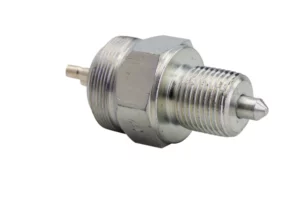
2. Examine And Treat Corrosion:
If the switch appears to be corroding, you might try cleaning the corroded parts and using epoxy or sealant. This is only a short-term cure, therefore it’s crucial to monitor the switch and consider replacing it in the future to ensure a lasting fix.
3. Examine The Installation:
A leak might occasionally happen as a result of poor installation. Review the switch’s installation, paying special attention to the mounting, connections, and seals. Ensure that every part is tight and secure. Consult the owner’s manual for your automobile or enlist the assistance of a qualified mechanic if you have questions about the installation.
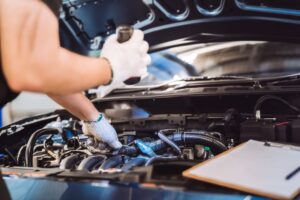
4. Address Problems With High Pressure:
Too much pressure produced by the power steering system might strain the pressure switch and cause leaks. You must determine the underlying reason for the high pressure in order to address this. Check for any anomalies with the power steering pump, hoses, and fluid levels. Replace the power steering pump right away if it’s broken to get the pressure back to where it should be.
5. Consistent Maintenance:
The best treatment is frequently prevention. Routine maintenance should be done to prevent power steering pressure switch leaks in the first place. Keep an eye out for any indications of rust, leaks, or damage to your power steering system. Future repair expenditures that are more significant can be avoided with early detection.

6. Use The Proper Fluid:
Use only the power steering fluid that your car specifies. The incorrect fluid choice might cause leaks and seals to degrade. To be sure you’re using the correct fluid, consult the owner’s manual for your automobile or a professional.
Therefore, you may handle a power steering pressure switch leak and retain a secure and comfortable driving experience by employing these fixes. Additionally, keep in mind that regular maintenance and prompt repairs can increase the lifespan of your power steering system and prevent future steering issues.
Preventive Measures To Consider For Power Steering Pressure Switch Leaks
For your car to steer smoothly, you need to avoid the power steering pressure switch leaking in your car. Here are some easy precautions you can take to maintain the health of your power steering system.
1. Routine Checkups:
While performing regular maintenance, check your power steering system. Check for any indications of leaks, rust, or damage.

2. Apply The Correct Fluid:
Use just the power steering fluid specified in your car’s owner’s manual. It’s possible for the switch to be damaged by the incorrect fluid.
3. Don’t Overload:
Don’t overburden the vehicle to the point where it strains the steering. It might overwork the switch and cause leaks.
4. Discreet Steering:
Especially when the car is stopped, use caution when rotating the steering wheel. As it may strain the system, avoid pushing the wheel.

5. Avert Bump:
When feasible, try to steer clear of driving on uneven or uneven roads. The switch could be damaged by bumps jolting it.
6. Expert Assistance:
Do not wait to report any problems or leaks you suspect. Before the issue grows worse, seek professional assistance to resolve it.
You can help prevent power steering pressure switch leaks and maintain the steering system in good condition by according to these straightforward instructions.
When To Seek Professional Advice?
When your car has leaks in the power steering pressure switch, consult a professional:
1. Uncertainty:
It’s a good idea to visit a mechanic if you’re not sure why your power steering is functioning strangely or if you think there might be a leak but can’t detect it.

2. Fluid Loss:
A persistent leak that requires professional care might be detected when you observe a considerable loss of power steering fluid or frequent top-offs.
3. Strange Sounds:
Strange sounds, such as whining or groaning when you spin the wheel, may point to a more complicated problem with your power steering system that a specialist can identify.

4. Steering Difficulty:
It’s important to have your steering checked by a professional if it seems heavy or unresponsive, especially when parking or moving slowly. A leaky pressure switch could be impairing the function of your power steering.
5. Visible Damage:
It’s advisable to let a professional evaluate the amount of the damage and offer repairs or replacements if you see any obvious damage to the power steering pressure switch or the area around it, such as cracks, dents, or rust.
Conclusion:
Therefore, if a power steering pressure switch leaking is not fixed, it may impair your car’s steering response and perhaps endanger the power steering system. You can continue to drive safely and comfortably by comprehending the reasons of this problem and putting the right answers into practice. To avoid power steering pressure switch leaks and ensure the durability of your vehicle’s power steering system, regular maintenance, proper installation, and the use of the right components are essential.


